Shokupan Hot Cross Bun Loaf (Japanese Milk Bread)
Shokupan Hot Cross Bun Loaf is a wonderful combination of super-soft, fluffy Japanese-style milk bread and the traditional British fruity and warmly spiced Easter treat. Whether cut into slices or pulled apart and eaten as buns, you’ll love this surprisingly easy loaf spread with butter.
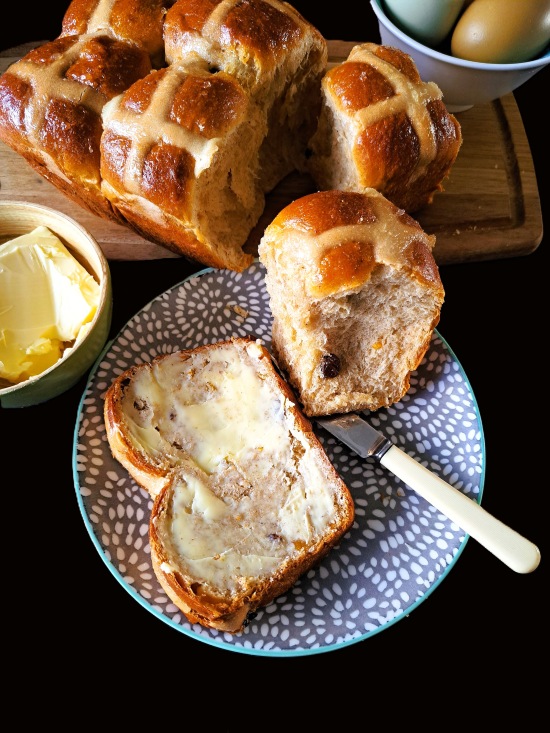
Disclosure: this post may contain affiliate links. If you buy via my links, I may earn a small commission at no extra cost to you.
Jump to Recipe
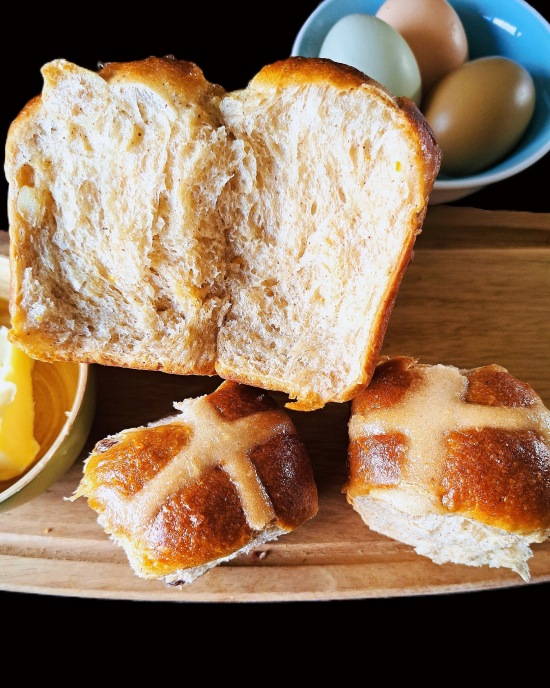
While I love a traditional hot cross bun, when you’ve been cooking as long as I have (it must be around forty years now) it’s only natural that you’re going to want to ring the changes. So, in addition to my recipe for classic Hot Cross Buns (both instant yeast and sourdough versions), I’ve previously posted about richer Brioche Hot Cross Buns, and also speedy but equally delicious Hot Cross Scones.
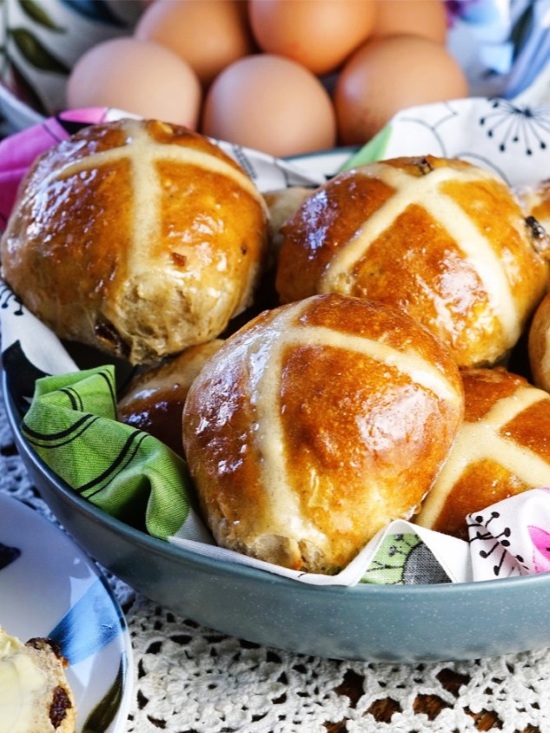
And for this Easter, I’ve made what I think is my favourite variation so far: Shokupan Hot Cross Bun Loaf. You still get the traditionally British warm spice and fruity flavours. But they come in a versatile loaf that’s wonderfully fluffy thanks to a surprisingly simple Japanese technique that takes just an extra 5 minutes work.
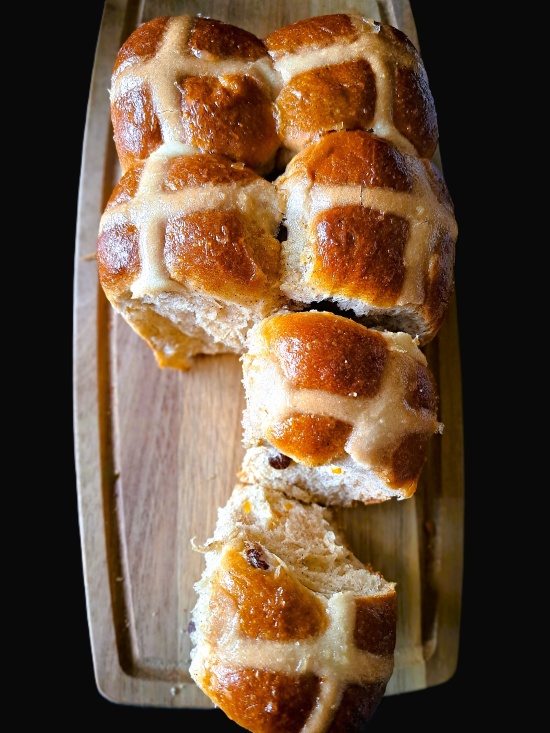
I really hope you’ll give it a try as the results are so good.
WHAT IS SHOKUPAN?
Shokupan, sometimes referred to as Hokkaido, is an enriched, sweet-flavoured Japanese milk bread. Similar to brioche, what makes it distinctive is its very soft and outrageously fluffy texture. This is achieved by a technique called yukone or yudane, although in the West it’s better known by its Chinese variant: tangzhong. I started experimenting with the method last year and, to my surprise, found it incredibly easy. Even my very first loaf, pictured below, was unbelievably good.
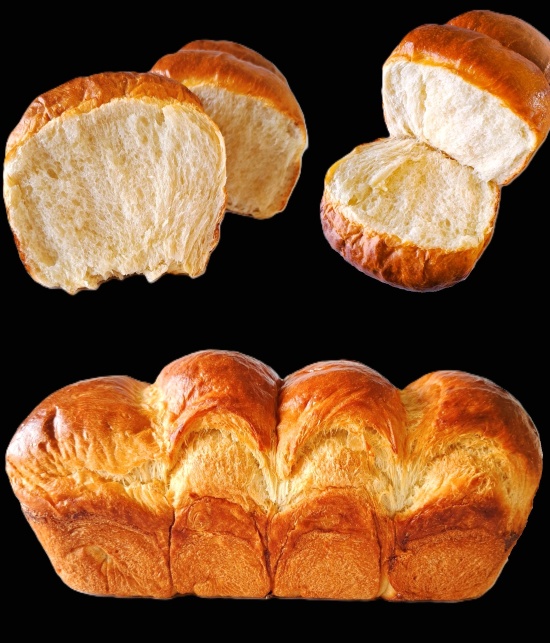
All you do is take a small amount of the flour and liquid that will go into your dough and first cook them together on top of the stove. The result is a thick paste or roux which you then incorporate into the dough. This initial scalding of the flour allows the starches it contains to absorb more liquid which gives us several benefits:
- The enriched dough is less sticky to work with
- Breads are softer
- More liquid creates more internal steam so breads can rise higher in the oven
- The bread stays moister and fresher for longer

Shokupan or Hokkaido bread can be baked as loaves or rolls. While the loaves are often baked in lidded Pullman tins to give a flat top, I’ve previously made the version where the dough is divided into 3 or 4 long rolls and placed in a regular loaf tin. This gives an attractive, undulating surface which also means the loaf can be either sliced or pulled apart.
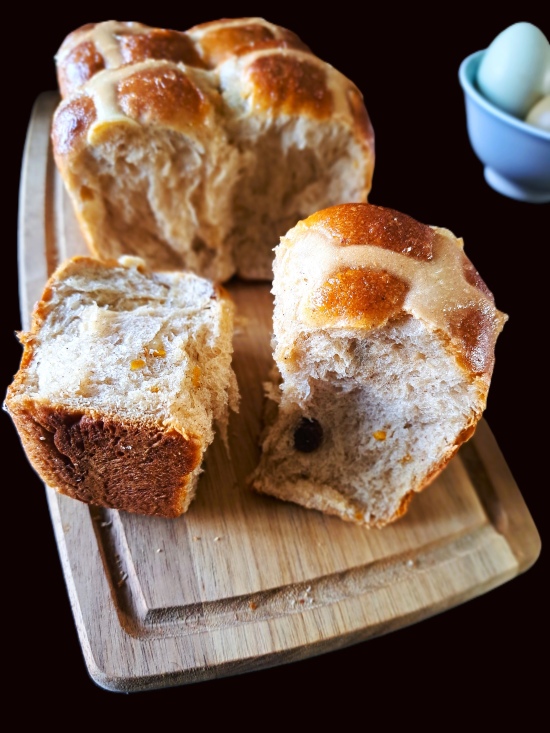
So, I thought, why not combine that with traditional hot cross bun flavours? The result was fluffy and delicious Shokupan Hot Cross Bun Loaf.
SHOKUPAN HOT CROSS BUN LOAF
You’ll find a recipe card at the end with ingredient amounts and full instructions. But I recommend you read the whole of this post first for extra tips plus step-by-step images to guide you.
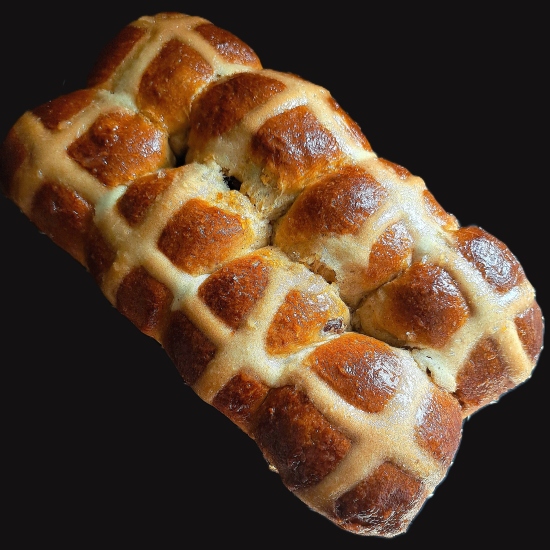
If you’ve successfully made any sort of bread before, then you’ll have no problem with making this loaf. And if ever you’ve made a roux for a white sauce, then making the tangzhong will feel familiar too.
MAKING THE TANGZHONG
To make the tangzhong, all you do is put in a small saucepan 15 grams of bread flour and 45 ml each of water and milk. Using a small coil whisk, combine them until there’s no lumps, then put over medium-low heat. Keep briskly whisking while it heats and thickens. Reduce the heat to low and keep whisking until you have a very thick paste or roux.
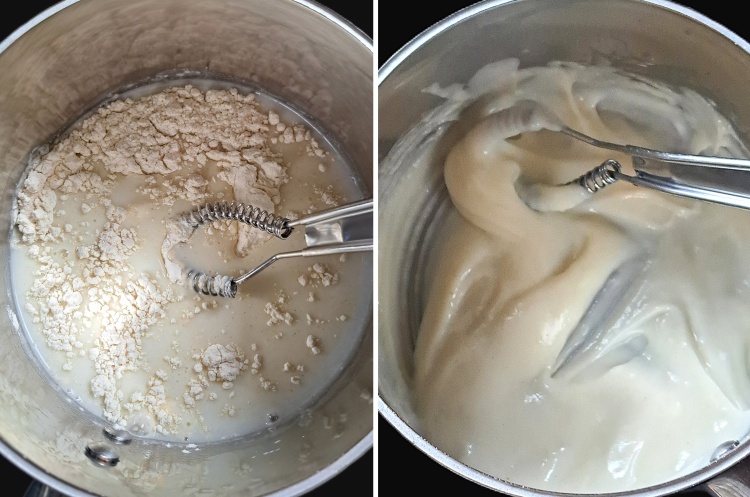
This will only take 3 – 5 minutes and when it’s done, transfer the tangzhong to a small bowl and leave it to cool.
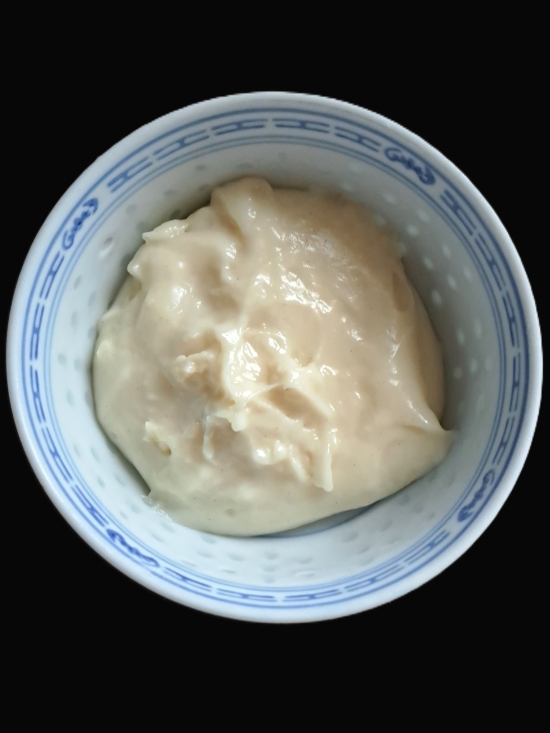
While it’s cooling, you can gather the rest of the dough ingredients.
DOUGH INGREDIENTS
To make the dough for Shokupan Hot Cross Bun Loaf you’ll need the following.
- white bread flour
- caster sugar
- skimmed milk powder: helps create a softer texture and milky taste, but can be left out
- instant dry yeast i.e. the type that doesn’t need activating before use
- mixed spice
- cinnamon: can be replaced with more mixed spice
- salt
- an orange: zest only: I use the juice to plump up the dried fruit
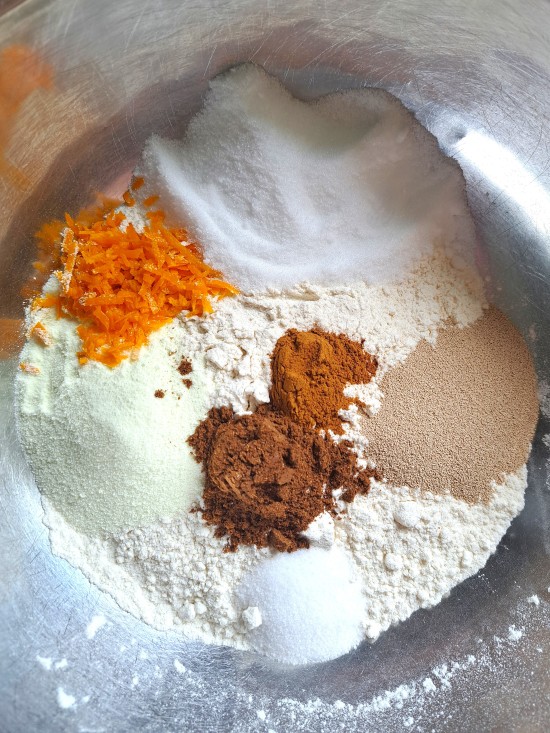
- milk
- egg
- butter: melted
- dried fruit: I’ve used sultanas, raisins, and peel (unfortunately, the latter doesn’t show up well in photos of the finished loaf)

MAKING THE DOUGH FOR SHOKUPAN HOT CROSS BUN LOAF
For accuracy when baking, I always recommend you use digital scales and metric measurements. These were used to test the recipe and I can’t vouch for the results if you try to convert them e.g. to American cups.
Because the dough for Japanese milk bread is quite sticky, it’s usually recommended that you use a stand mixer to knead it. However, I don’t have space for one, so use the dough hooks on a handheld mixer and still get a great result. If you have the patience, you can also knead by hand. I recommend a silicone mat and dough scraper for most bread recipes, and they’ll certainly be helpful with this dough.
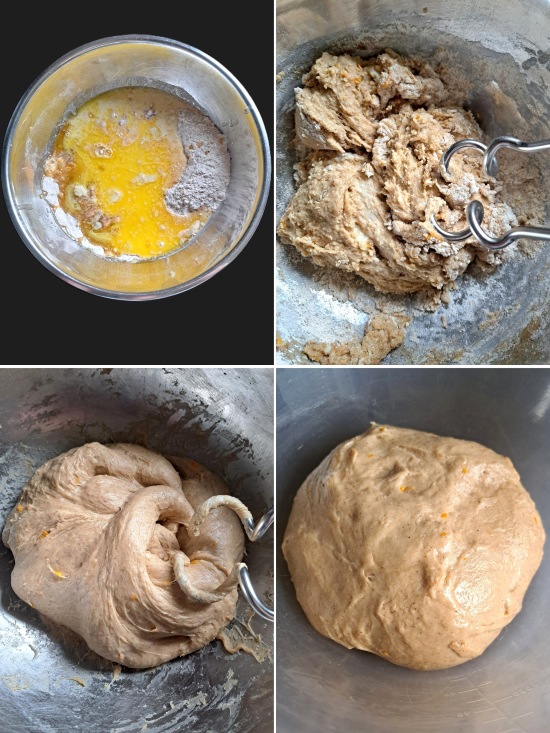
To make the dough, put the bread flour, sugar, milk powder, yeast, spices, salt, and orange zest in a large mixing bowl or stand mixer. Stir/mix to combine, then add the milk, the cracked egg, the melted butter, and the cooled tangzhong. Knead until you have a shiny, silky dough. This will probably take 12 – 15 minutes so, if using a hand mixer, do it in 3 – 4 minute bursts to avoid burning out the motor.
When you’ve made the dough, transfer it to a clean, lightly oiled bowl. Cover it and leave in a warm place until puffy and almost doubled. When it’s a ready, the dough shouldn’t spring back if you poke a finger in it. Depending on the temperature, this stage may take 1 – 2 hours.
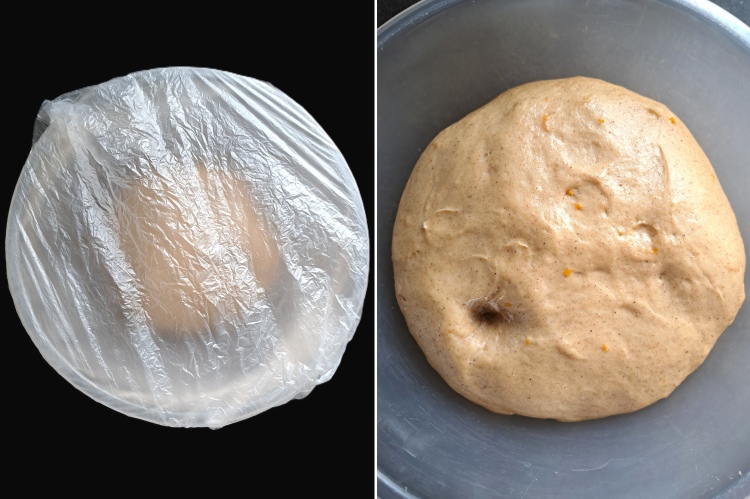
While the dough is rising, I like to plump up the dried fruit. I put it in a saucepan with the juice from the orange, simmer for 1 minute, then set aside to cool.
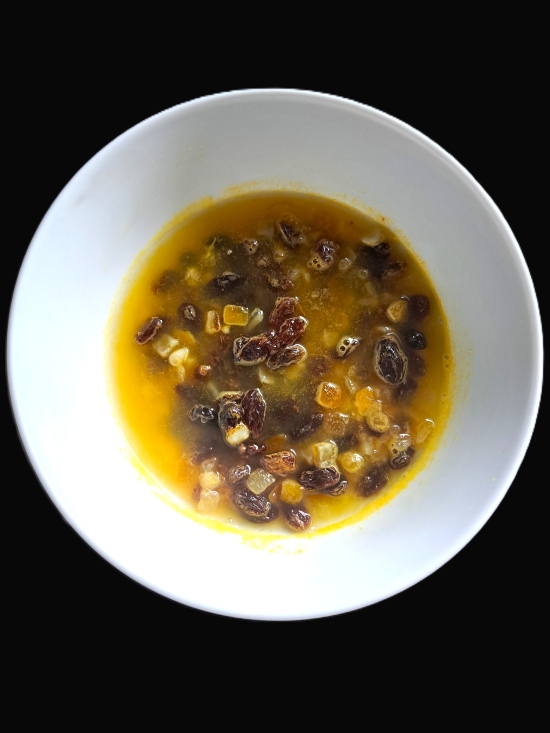
Before using the soaked fruit, thoroughly drain it. I then lay it on kitchen paper to get rid of any excess liquid that could make the dough too wet.
ADD THE DRIED FRUIT & SHAPE THE LOAF
To add the fruit, first scrape the dough onto your work surface (ideally covered with a silicone mat or else lightly floured), then use your hands to flatten it out. Now sprinkle over the drained fruit. Fold over the sides to cover it, then continue folding to incorporate the fruit throughout the dough. As it will be sticky, your dough scraper really helps here.
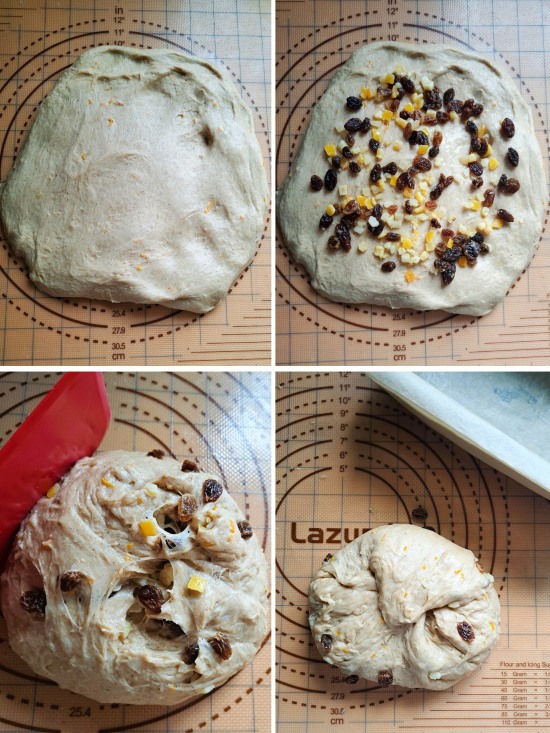
We now divide the dough into 8 equal pieces. So that the buns of the Shokupan Hot Cross Bun Loaf are as uniform as possible, I use digital scales. Fold each piece into a ball, pushing in any bits of fruit that stick out as they easily burn. Then, with your fingers touching the worksurface and a dough ball lightly cupped beneath your palm smooth side up, quickly move your hand in a circle approximately 10 times. This should give you a neat, round-topped ball.
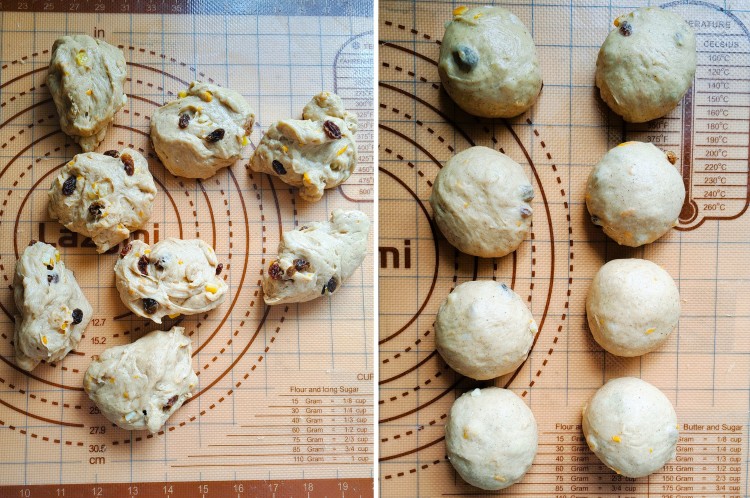
To bake the loaf, you’ll need a loaf tin, preferably non-stick, with a capacity of 900 ml or 2 lb. To make certain the loaf will come out easily, I butter the tin. You can also line it with a piece of baking paper that comes above the long sides.
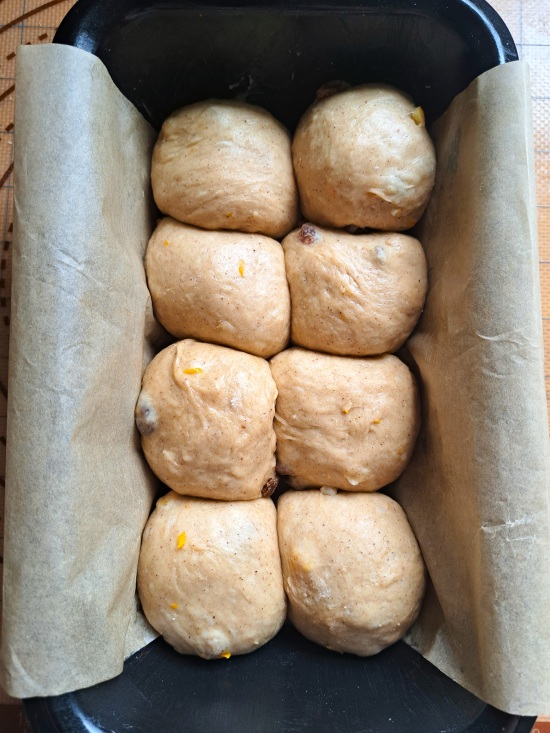
Place the buns in the prepared tin in 2 columns of 4. It will be very snug, but that’s fine.
SECOND RISE & ADDING THE CROSSES
The hot cross bun loaf now needs its second rise. Covered in a warm place, this should take around 40 minutes. But the best way to check whether this (or any other dough) is ready is to gently insert a finger. If the dough immediately springs back, leave it a while longer. However, if it springs back slowly and leaves an indent then you’re good to go.
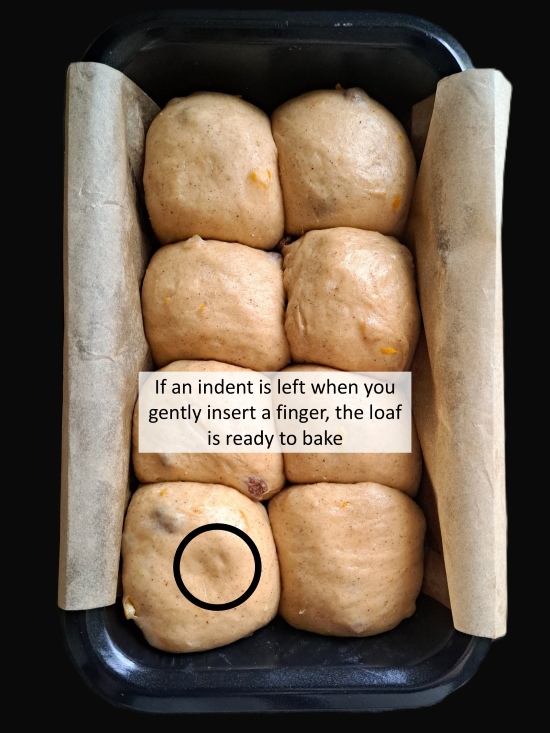
During the second rise, you should preheat your oven to the temperature shown in the recipe card. This is also the time to make the paste that will form the distinctive crosses on top of the loaf.
For crosses that are soft and sweet, I mix up a pipeable paste of plain flour, icing sugar, water, and a drop of sunflower oil. Different flours will absorb different amounts of liquid, but what you’re looking for is a consistency like medium bechamel white sauce. Transfer the paste to a small piping bottle or bag. Use a small diameter nozzle as the crosses will spread a little.
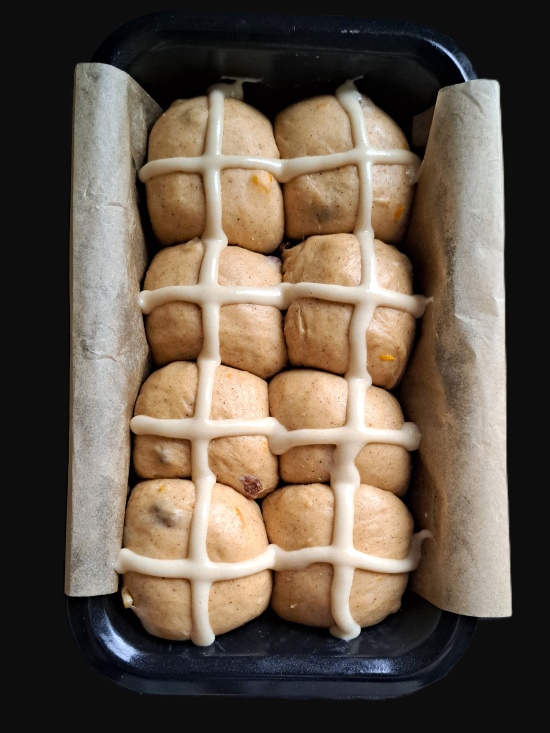
To make the crosses, pipe a single line down both columns of 4 buns, then across each row of 2.
BAKING & GLAZING SHOKUPAN HOT CROSS BUN LOAF
The loaf should take just 35 minutes to bake to a deep golden brown. When it’s done, remove from the oven but leave for 5 minutes before removing from the tin.

You can then set it on a wire rack and add a shiny glaze. Any light-coloured jam that isn’t chunky will be fine. Here I’ve used some of last year’s homemade Courgette, Lemon & Ginger Jam. Or you could use honey. Whichever you use, briefly warm it in a small saucepan or a microwave until it’s loose enough to brush over the top of the hot cross bun loaf.
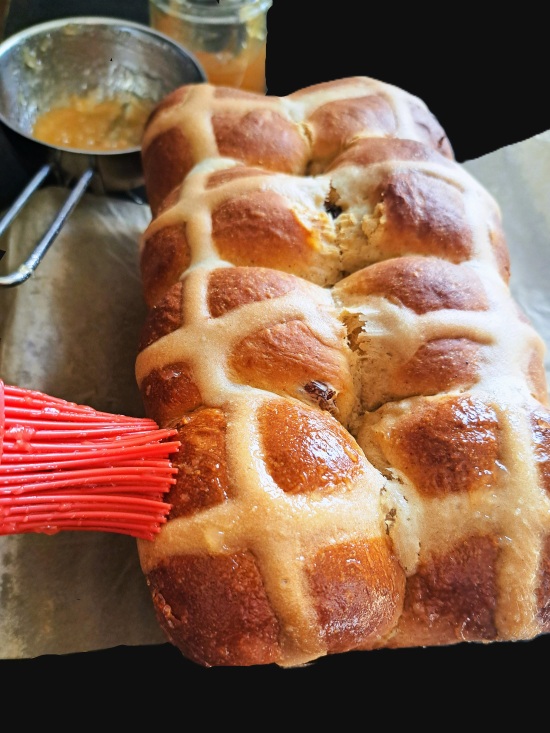
Although it’s hard to resist the look and aroma, do try to leave it until just warm or cool.
SERVING SHOKUPAN HOT CROSS BUN LOAF
One of the things I love about hot cross bun loaves, in addition to their spicy, fruity sweet flavour, is that you have two completely different ways of eating them. You can slice like any other fruit bread or pull apart and eat like traditional hot cross buns. Either way, I can’t resist a good slather of butter.
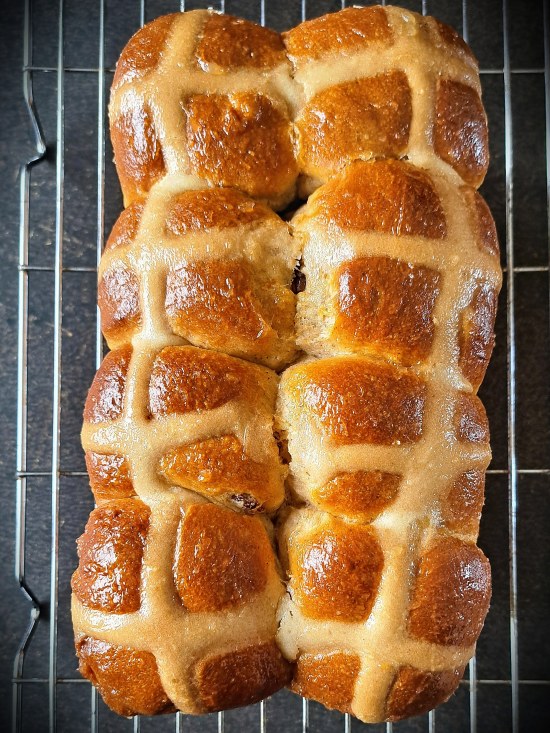
But what’s so special about Shokupan hot cross bun loaf is its super-fluffy texture. And all thanks to just five extra minutes to make a tangzhong paste. Sometimes, when you slice a soft loaf, you lose fluffiness as it gets squished by the pressure of the knife. But, as I hope you can see from the images, this one still looks very perky.
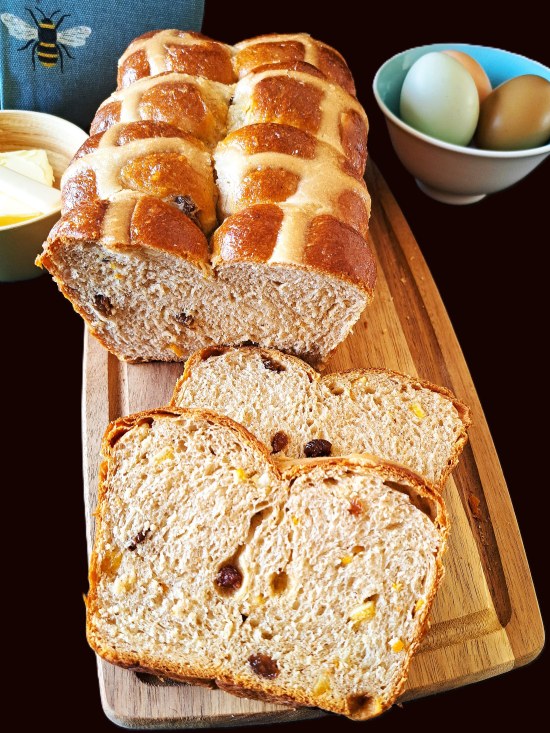
If you’re eating as individual buns, to maintain maximum fluffiness don’t use a knife to split into top and bottom though. As with a fresh scone, you should pull the individual buns apart.
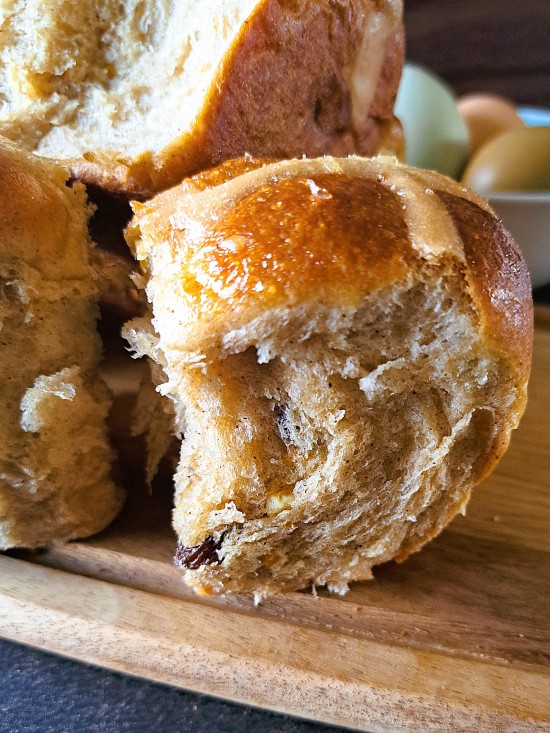
I think the loaf is best eaten within 2 days, but it does freeze well. You can freeze the whole thing or part of it, in slices or as individual buns. As I write, I’ve half a loaf in my freezer which I’ve left intact so I can choose how to eat it. The buns reheat well in a microwave, or you could do it in a low oven or air fryer. Sliced, the loaf is wonderful toasted.
DELICIOUS & SURPRISINGLY EASY
For years I’ve been encouraging people to make their own hot cross buns. Made with a simple, sweet dough, enriched with butter and egg, flavoured with spice and studded with fruit, the Springtime festival just wouldn’t be the same without them. But I’ve now discovered that combining the British traditional Easter treat with fluffy, Japanese-style milk bread creates something very special indeed.
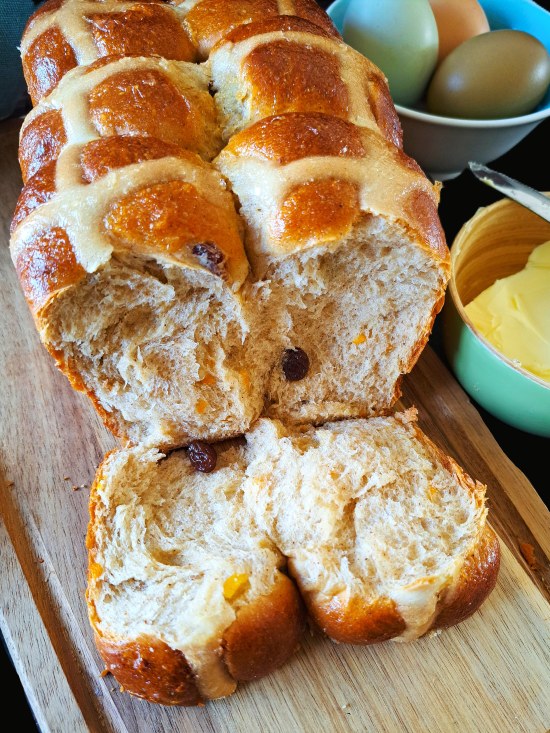
Shokupan Hot Cross Bun Loaf has all the spice, all the fruit, but in a super-soft, milky bread. And the good news is, it takes virtually no extra effort.
If you’ve made this recipe, I’ve love to know what you thought. Please leave a comment and rating.
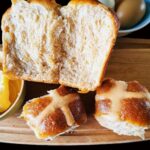
Shokupan Hot Cross Bun Loaf
A wonderful combination of fluffy Japanese-style milk bread and the traditional British fruity and warmly spiced Easter treat. Can be sliced as a loaf or pulled apart and eaten s buns.
Making the flour paste known as tangzhong adds just 5 minutes work but is so worth it for a super-soft result.
It's recommended you read the accompanying blog post before starting the recipe and use digital scales.
Ingredients
For the tangzhong paste
- 45 g milk
- 45 g water
- 15 g white bread flour
For the dough
- 300 g white bread flour
- 50 g sugar
- 15 g skimmed milk powder
- 1 tbsp instant dry yeast
- 2 tsp mixed spice
- 1 tsp ground cinnamon (can be omitted or replaced with more mixed spice)
- 1 tsp salt
- 1 large orange (zest only)
- 115 ml milk
- 1 egg
- 60 g butter (melted)
Dried fruit
- 100 - 150 g mixed dried fruit (e.g. equal amounts dried peel, raisins, sultanas)
- 1 large orange (juice only)
For the crosses
- 25 g plain flour
- 15 g icing sugar
- 1 drop oil e.g. sunflower
- 1 - 2 tbsp water
For the glaze
- 1 tbsp light coloured jam e.g. apricot, ginger, lemon (or honey)
Instructions
Make the tangzhong paste
-
Put the milk, water, and bread flour in a small saucepan and use a small whisk to combine with no lumps.
Put over medium-low heat and keep briskly whisking while it heats and starts to thicken. Reduce the heat to low and keep whisking until very thick (3 - 5 min.).
Transfer to a small bowl and set aside until only just warm.
Make the dough
-
Put the bread flour, sugar, dry milk powder, instant yeast, spices, salt, and orange zest in a mixing bowl and stir to combine (or put in the bowl of a stand mixer).
-
Tip in the milk, crack in the egg, add the melted butter and the cooled tangzhong paste.
-
Using a stand mixer or dough hooks on a hand-held mixer, or by hand, combine and knead the ingredients to create a shiny, silky dough: this will take approximately 12 - 15 minutes.
Tips
- If using a hand-held mixer, knead in 3 - 4 minute bursts so you don't burn out the motor.
- If kneading by hand: stir everything together with a silicone spoon then switch to your hands. The dough will be very sticky but try to use as little extra flour as possible and ideally knead on a silicone mat. You will also find a dough scraper helpful.
-
Lightly oil a clean bowl and transfer the dough into it.
Cover and leave in a warm place until puffy, almost doubled, and when you poke a finger in the dough it doesn't spring back: approximately 1 - 2 hours.
(While the dough is rising, complete the next 2 steps).
Soak the dried fruit
-
Put the dried fruit and the juice of the orange in a small saucepan.
Bring up to the boil and simmer for 1 minute.
Take off the heat and set aside to cool.
Prepare a loaf tin
-
Butter a non-stick 900ml/450g loaf tin and/or line with baking paper so it comes above the long sides.
Add the fruit and shape the loaf
-
Tip the soaked fruit into a sieve and drain. Pat with or spread on kitchen paper to remove any remaining liquid.
-
Turn the dough out onto your work surface, ideally covered with a silicone mat or else lightly floured, and flatten it into a disc with your hands.
Sprinkle the dried fruit over the surface then fold over the sides of the dough to cover it (use your dough scraper if you have one). Continue folding until the fruit is evenly distributed throughout the dough.
-
Divide the dough into 8 pieces, using digital scales for accuracy.
Fold each piece into a ball (push in any bits of fruit that stick out as they easily burn) then with your fingers touching the worksurface and a dough ball lightly cupped beneath your palm smooth side up, quickly move your hand in a circle approximately 10 times to finish shaping into a neat, round-topped ball.
-
Place the balls in the prepared loaf tin in 2 columns of 4: it will be a snug fit but that's fine.
Cover and leave in a warm place for approximately 40 minutes or until the dough slowly springs back but leaves a slight indentation if you press it with your finger.
During this time:
- preheat your oven to 180°C / 160°C Fan / Gas 5 / 350°F with a shelf in the middle position
- make the paste for the crosses.
Make the paste and add the crosses
-
In a small bowl, stir together the flour and icing sugar. Add the drop of oil plus gradually add enough water to make a pipeable paste the approximate consistency of a medium white sauce.
Transfer the paste to a small piping bottle or bag fitted with a small nozzle.
-
When the loaf is risen, pipe a cross on each bun by first piping a line down each column and another across each row.
Bake the loaf
-
Transfer the loaf to the oven and bake until it is deep golden brown and sounds hollow when tapped underneath: approximately 35 minutes.
-
Remove from the oven and leave for 5 minutes before turning out (if you lined the tin, use the paper to lift it out) and put on a cooling rack.
-
In a small saucepan or in a microwave, gently heat the jam until loose then brush over the top of the loaf.
-
Leave until just warm or cool before slicing or pulling apart and serving spread with butter.
Best eaten within 2 days or can be frozen.
Can be reheated in a microwave, low oven or air fryer, or sliced and toasted.
Recipe Notes
The Shokupan dough base for this recipe was adapted from a King Arthur Flour recipe.



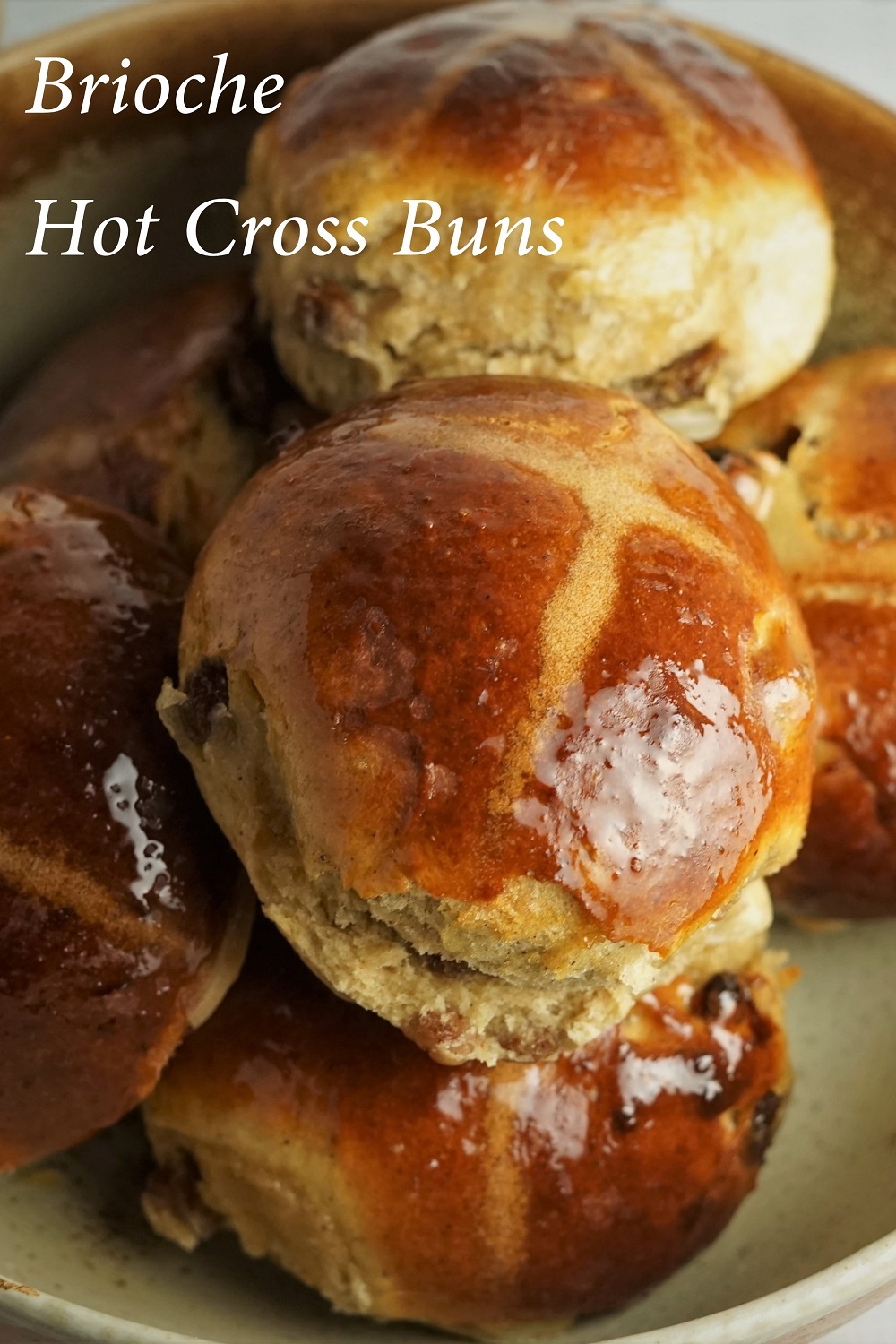
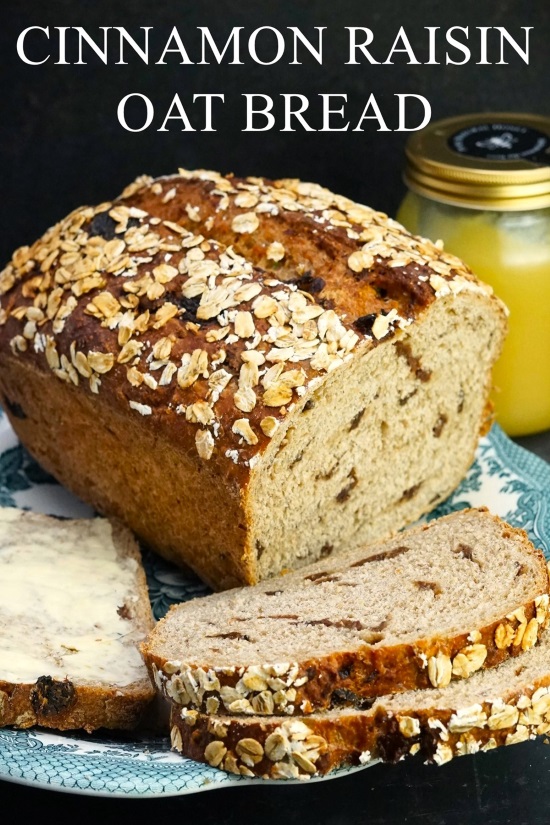
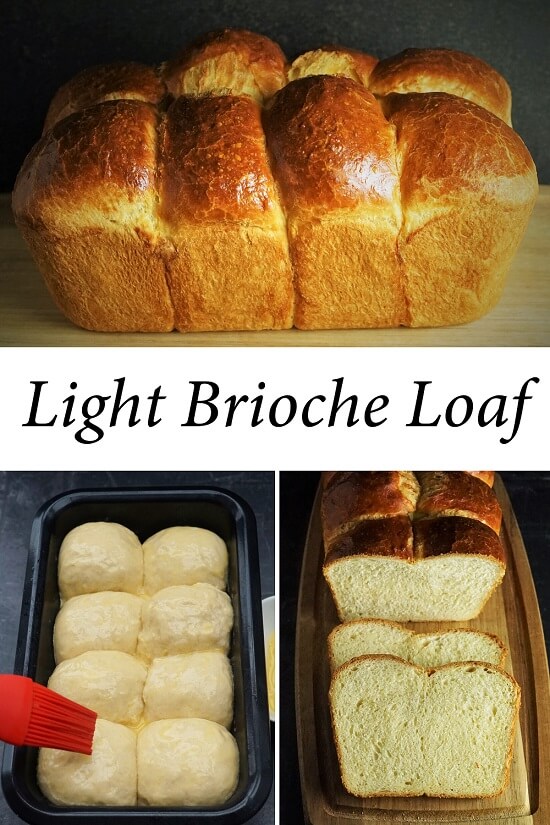

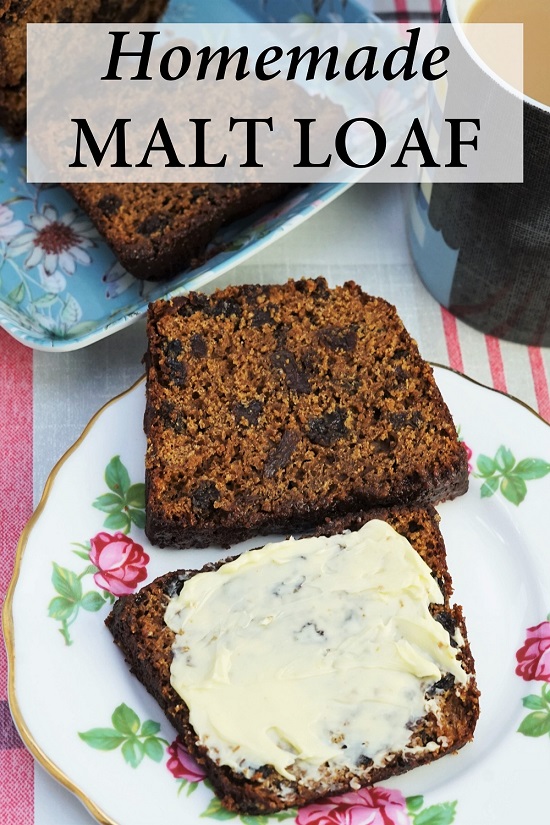
The first time that I tried tried using the Shokupan method, and was very sceptical when the mixing started. I usually knead by hand but used my stand mixer for this one. The mix looked very wet at first but it came together after a few minutes mixing. I deceided to make separate buns instead of the loaf and they turned out great ! Probably the best hot cross buns that I have made, thank you for the recipe.
Thank you so much for your fantastic feedback, Frank! Great to hear that this recipe works as individual buns as well as a loaf: thought it would but hadn’t tried it for myself, so that’s a bonus. Thanks again!